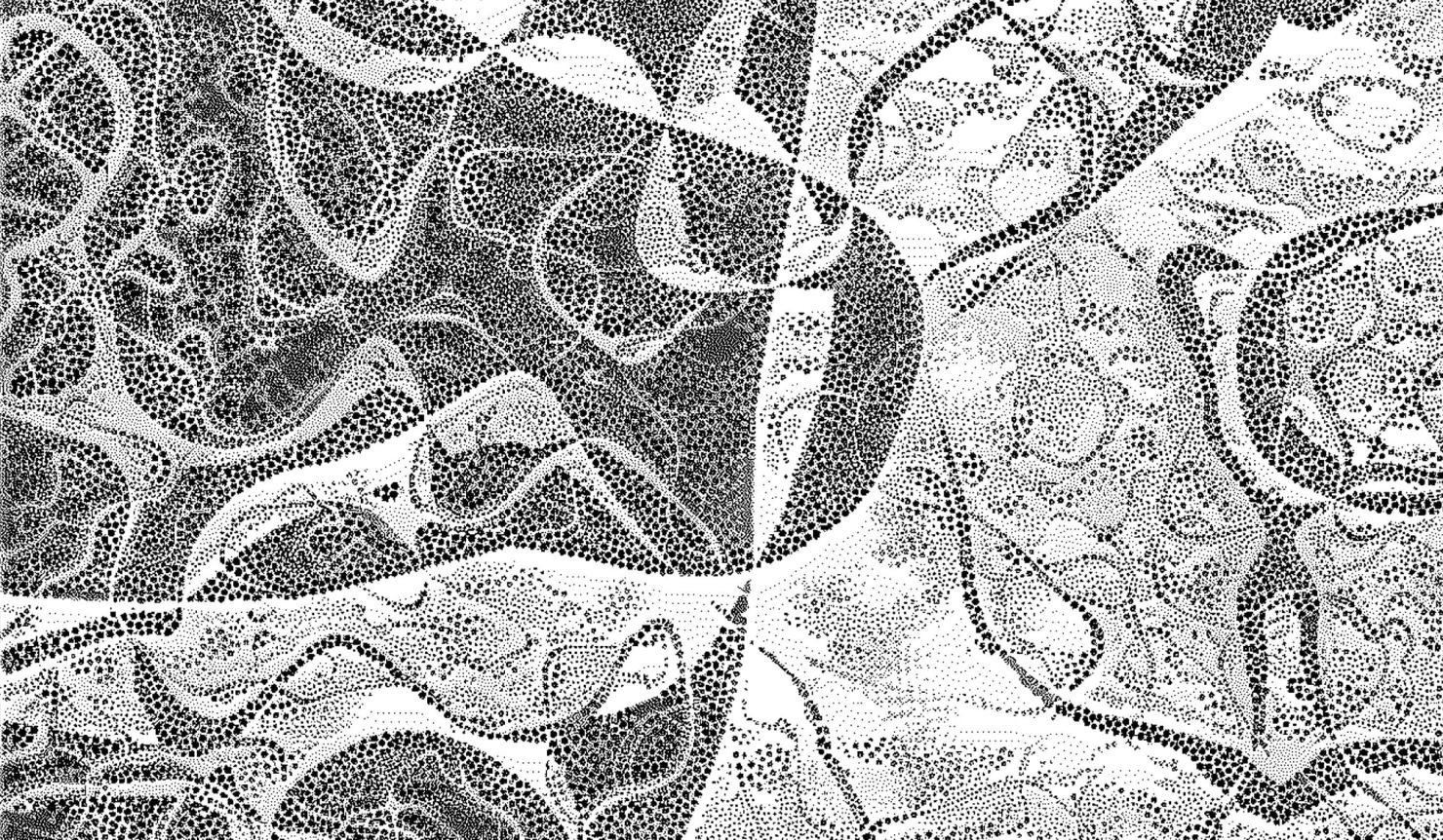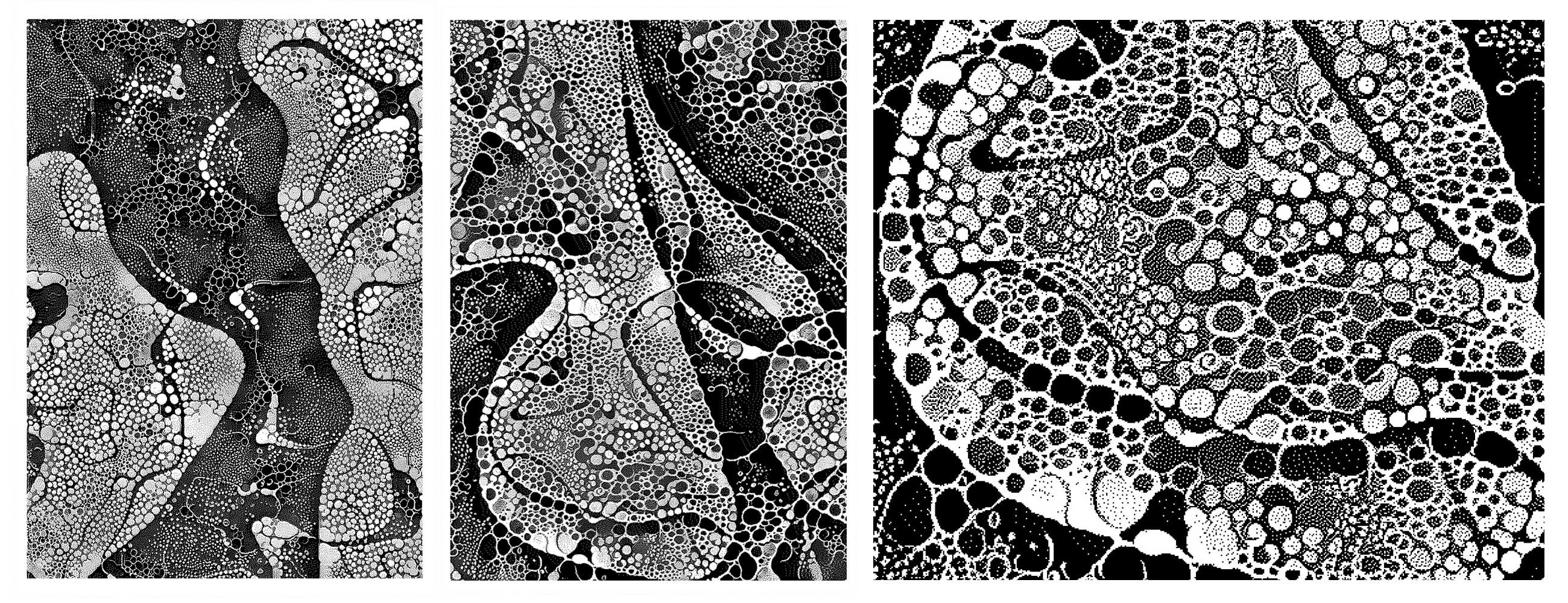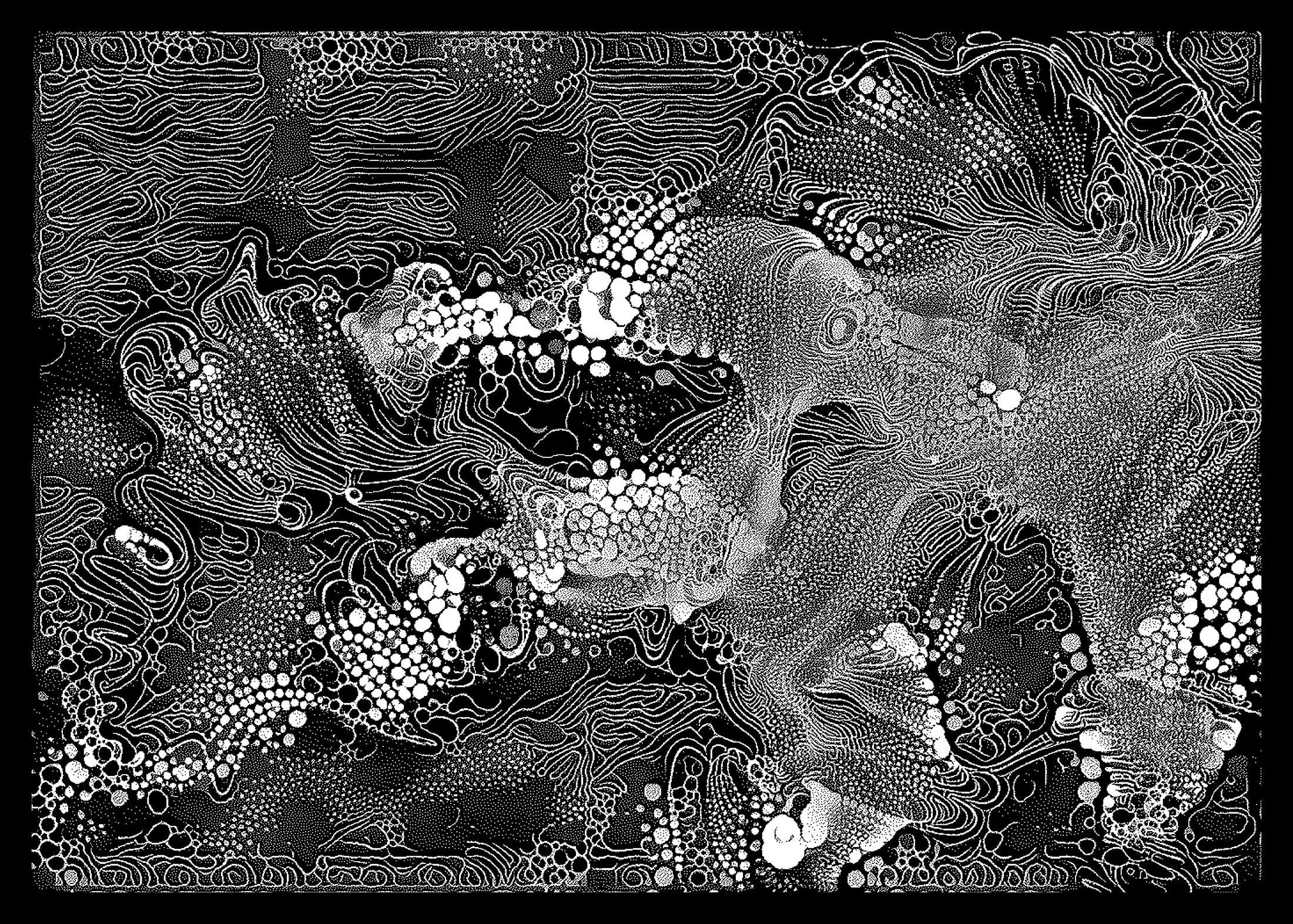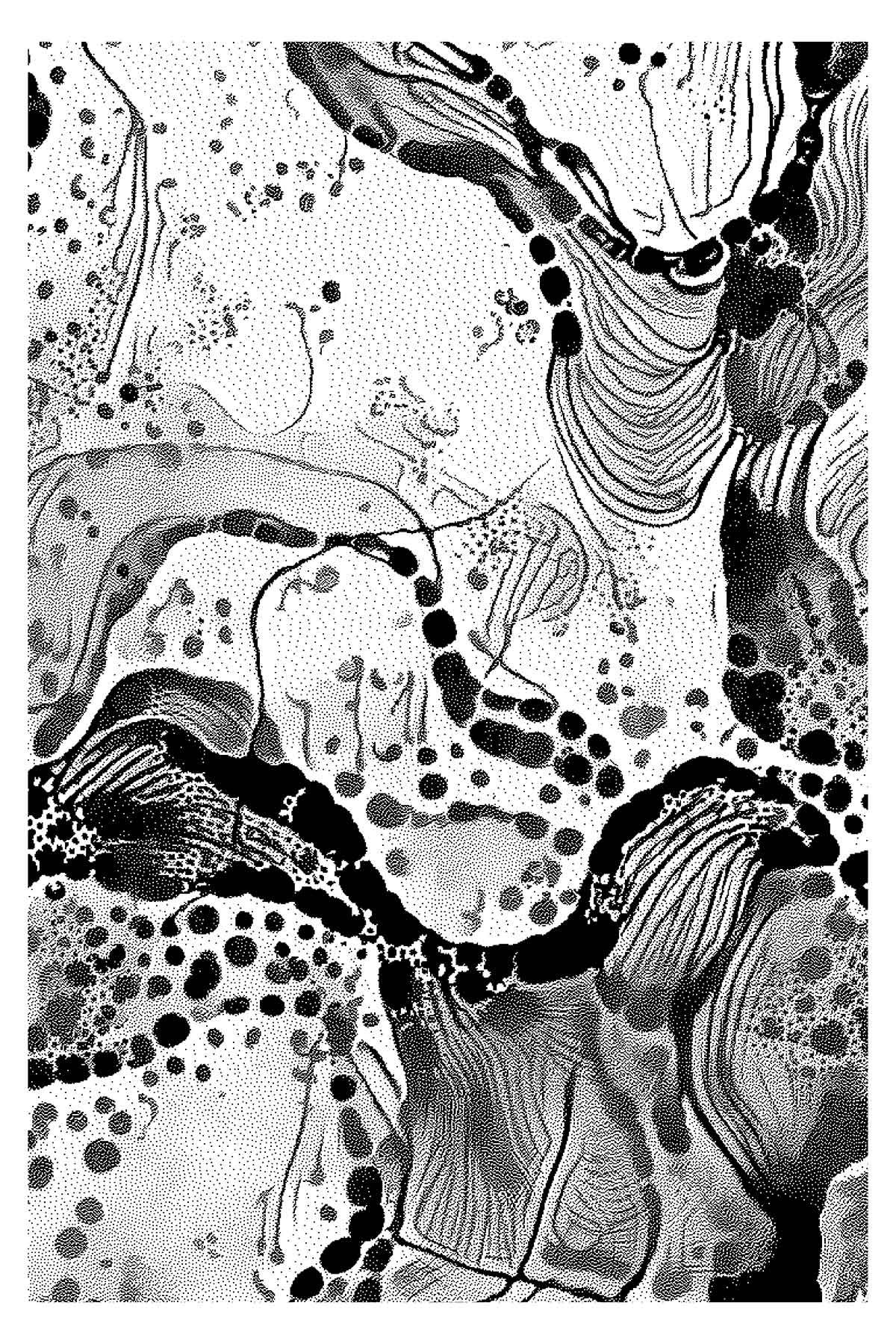
Humanising The Computer
"In a very uncanny way software appears to have a life of its own. The artist's role is to humanize it - give it the form and structure to serve the quality of our art and of our life." (Epigenet - http://www.verostko.com/epigenet.html).
Since 2021, my principal interest has been in exploring artificial intelligence as a tool in my art practice. What particularly interests me in this field is not only the ability to incorporate new techniques as part of a process of formal discovery but also to embark on learning more about what makes us human. That last part may sound rather grand and it is of course a complex issue. However, personally the undertakings of working with a technology that has pretence to imitate human traits has but only drawn me closer to wanting to learn more about the human. Every book or article I’ve read since embarking on understanding artificial intelligence as a technology has led me to reading more and more about how we think, feel and perceive the world. This brief article presents a selection of on-going art work that started early 2021 and that has been profoundly influenced by a particular process.

The emergence of form using machine learning is a relatively new terrain for me. I come from a background in generative art and graphic design which has a tendency to be highly geometrical in form. Indeed, when we look back into the history of computer art, we see that a large majority of the work created in the 60s and 70s had a visually hard-edge, mechanical aspect. This in part was due to the restrictions of the technology but also the fact that those behind the controls were for the most part scientists and mathematicians. However, as more and more artists became involved, computer art became increasingly informed by the artistic movements of the time. On a purely formal level, early computer or algorithmic art began to draw influence from geometric abstraction, early constructivist and bauhaus movements as well as take on more traditional artistic genres such as landscape and portraiture.

Like many contemporary artists working today with computational strategies and particularly within the generative, much of the work, mine included, has continued in line with these traditions. However, while discovering Generative Adversarial Networks or GANs, I began to break with this tradition, wanting to create a more organic set of aesthetics and bring a more human, hand-drawn feel to the image as well as embrace the imperfections, the accidents and the many surprises that arise from a highly personal process that I’ve diligently worked on for over a year now.
Most of the works that have evolved from this process of mixing generative strategies with GANS are abstract and many are informed by motifs and metaphors derived from biology and particularly micro-biology. This is the case with the series, Substance & Thoughts in which I purposefully attempt to direct my attention back to that crucial difference between man and machine - the body and biological matter. Other works take on names of neurological phenomenon such as apophenia and pareidolia or draw inspiration from the early explorers of the microscopic world and their meticulous illustrations.

While deliberately subverting the precision, symmetry and cold logic of the computer, creating images that seek a more natural expression, I am equally looking to strengthen the links between the art I make and the subjects that interest me. A lot of my work involves exploring a field and this can be on a technical as well as a conceptual level. A subject then becomes a means for research, even if only on a very basic level. Essentially, this is what I have put into practice with my Neural Drawings Series. When I started out with this series I was, and still am, very interested in aspects of neurology that discuss concepts such as memory, perception and emotion. Beyond the obvious links one can find with machine learning techniques that attempt to simulate the neural functioning of the brain, I have become particularly interested in how the machine constructs an image through pattern recognition and how we as humans construct eventual meaning from the observation of these patterns we call art.



